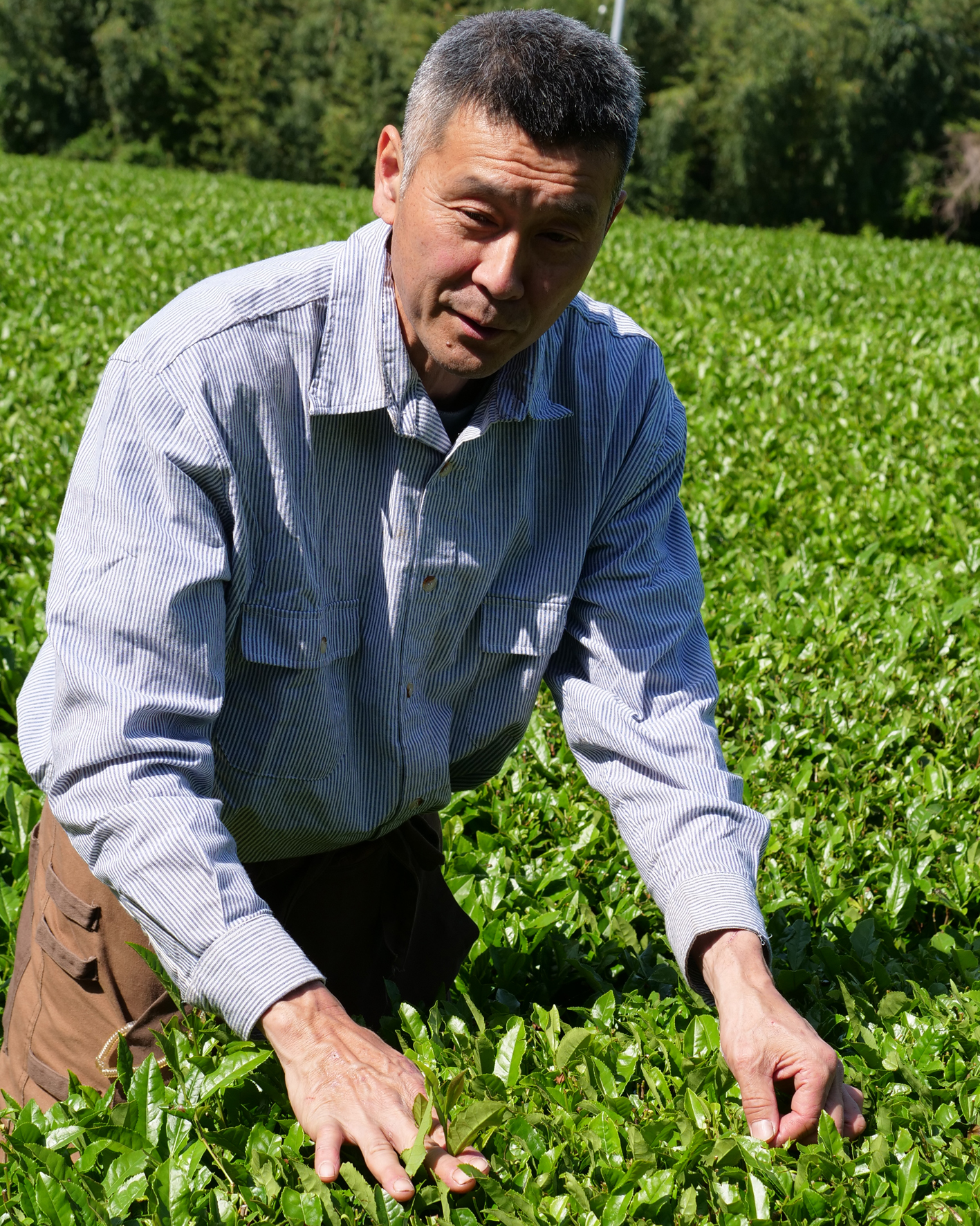After a hearty breakfast early in the morning, we leave Kyoto and continue south to Kyushu Island. Our schedule for today is really tight. We have half an hour to put our suitcases down, then we go straight to Minamata to meet Kazuya Matsumoto from Sakura-no En. During our phone call to prepare for the trip, Kazuya Matsumoto said that he might have to work at the factory today and might have only about two hours for us. Yesterday we got the good news that he was able to finish his work and has a lot of time for us today.

On the way to the tea gardens, he tells us that he has not yet had such a short harvest period. Normally, the harvest period lasts a few weeks and there are always days off in between due to the weather. This year, 55-year-old Kazuya Matsumoto worked from 16 April, the MOE harvest day, until yesterday, 30 April, without a day off. It has never happened before that he is still finished with his teas in April.


However, the community factory to which Kazuya Matsumoto has just been called is still bustling. A young tea farmer friend, whom he supports in the work and also in the sale of the teas, still needed advice on the steaming of the just-harvested Zaira tea leaves. The steaming machine is set at a relatively slant so that the tea leaves pass through it quickly and are thus steamed rather flat (asamushi). This also corresponds to Kazuya’s ideal for a Zairai tea. He thinks that Zairai should better have little suspended matter and thus a clear transparent infusion. To test it, he takes the freshly steamed and still hot tea leaves, rolls them between his hands and prepares an infusion. He is not entirely satisfied with the result and advises his friend to set the steaming machine a little shallower so that the tea leaves are steamed a little deeper. The result of this assessment is also checked again and finally found to be good.


Kazuya Matsumoto emphasises that it is very important to him to support young tea farmers in the region. It would not be good if he were the only tea grower in the region. When his great-grandfather founded the tea garden, it was already important to him to support the region – to provide work and development. Kazuya also wants to continue this tradition and is working on a network of tea farmers in Minamata who all grow tea without pesticides and mineral fertilisers.
After we have had a look at all the gardens and enjoyed the fantastic view of the surrounding mountains, we drive to the old community factory, which is very close to the house. This is where Kazuya Matsumoto produces his various black teas. Besides many old machines from the former green tea production, there is also a new machine that he uses for oolong production. In recent years, he has been working continuously on the production of various oolong teas.

When we arrive at the house, we are allowed to taste some of his teas. We were most taken with the floral, fragrant oolong. We enthusiastically drank infusion after infusion without the tea losing any of its intensity. If all goes well, we will also be able to get a small quantity of this. Kazuya Matsumoto prepares this year’s Shincha MOE as Mizudashi, i.e. with cold water. The sweetness is beguiling. However, the tea was not unknown to us. One day before departure, the MOE 2023 had already arrived in Frankfurt, so we were still able to taste it. We were also able to taste some black teas and even matcha. Ochazuke, i.e. rice with tea poured over it, was of course also a must. Many tea farmers eat their rice like this during the Shincha period. Drunk on tea, we made our way back to our accommodation late in the evening.

